Kraków 2020-04-18
049b Section 1948-09-01
Lotnicze Warsztaty Doświadczalne LWD Zuch
Poland
Training aircraft.
History
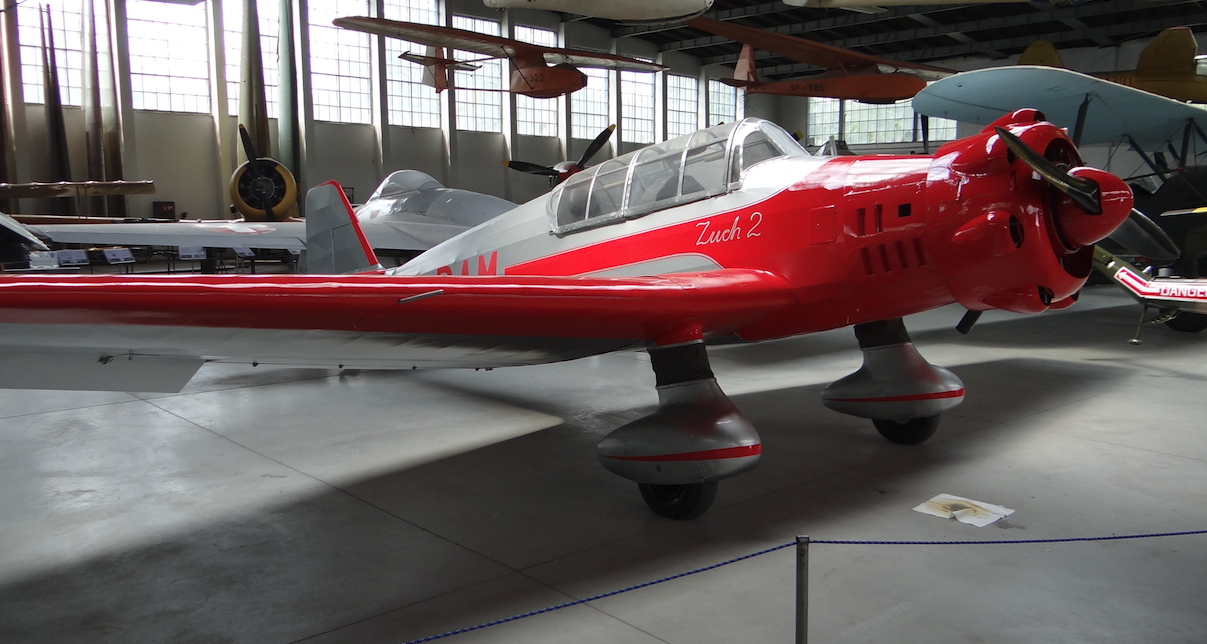
Zuch-1. 1948 year.
The earlier aircraft of the LWD Żak plant was equipped with a Walter Minor 6-III engine with 160 HP (118 kW). The team of Tadeusz Sołtyk decided to use this engine and build it on the LWD Junak aircraft. This is how the aircraft marked LWD Zuch-1 was created registration SP-BAD Serial number 17. The first flight of the machine was made on September 1, 1948, and the flyer was Ing. Antoni Szymański.
The LWD Zuch-1 aircraft had several significant changes compared to the LWD Junak aircraft. A single-shank, fully profiled chassis was used. Crocodile flaps were used on the wings. The rear support instead of the skid received a self-adjusting tail wheel. This improved the maneuvering (taxiing) of the aircraft on the ground.
Due to the more powerful engine and the more streamlined shape of the front fuselage, the aircraft had better performance.
The Zuch-1 aircraft underwent factory tests in the autumn of 1948 and in the spring of 1949. From July 1949 to November 1949, state tests were carried out at the Central Institute of Aviation. As a result of these tests, the rudder was slightly enlarged by 25 mm at runoff, and the rudder was expanded by 100 mm at runoff. Due to the higher maximum speed, with the same strength, it was necessary to reduce the load and weight of the aircraft. In this way, the aircraft was not certified as a training aircraft, but was certified as an aerobatic aircraft with a total weight of 860 kg. The aircraft was a good aerobatic machine, although it still did not have a fuel system that would allow a longer reverse flight.
Due to the perturbations with Walter engines, the Zuch-1 aircraft remained in one copy. The aircraft was in use until 1955. He was the first post-war Polish aerobatic plane. Experienced pilots flew there a lot and willingly. He allowed many with him to significantly increase the skill of piloting.
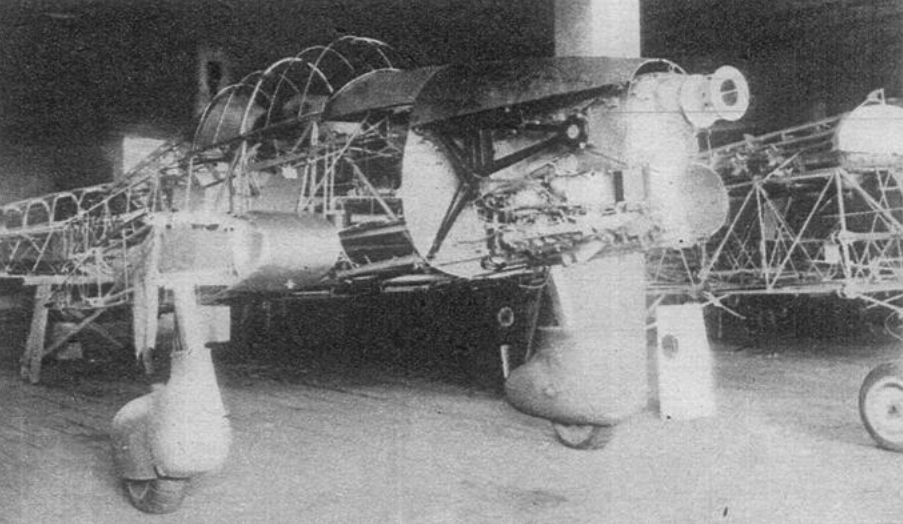


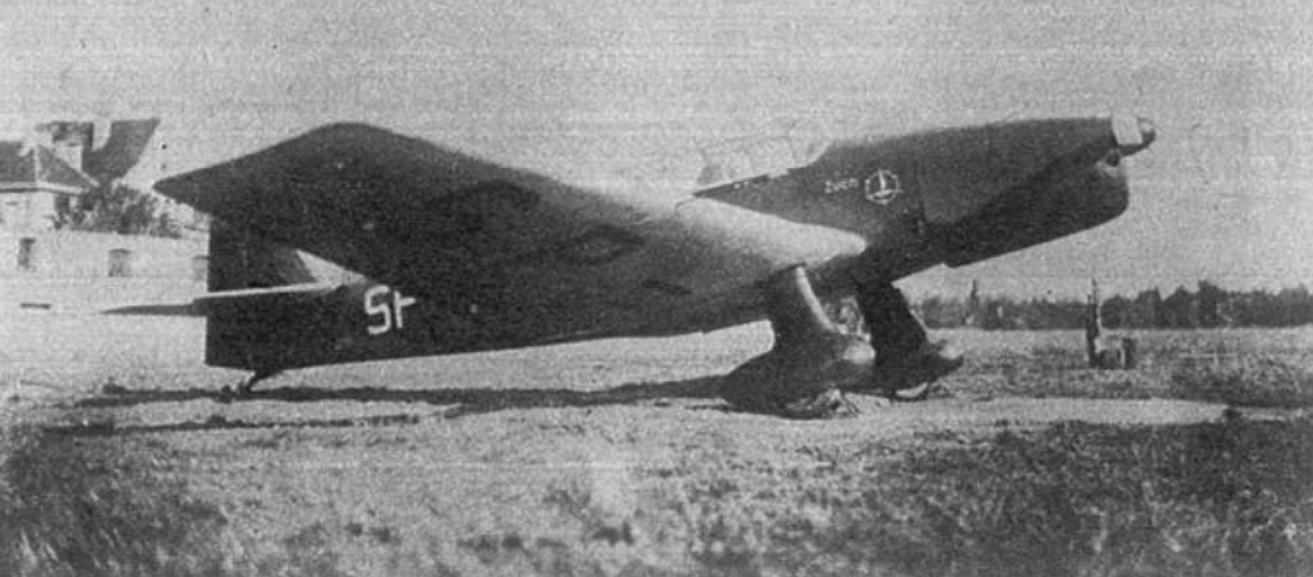
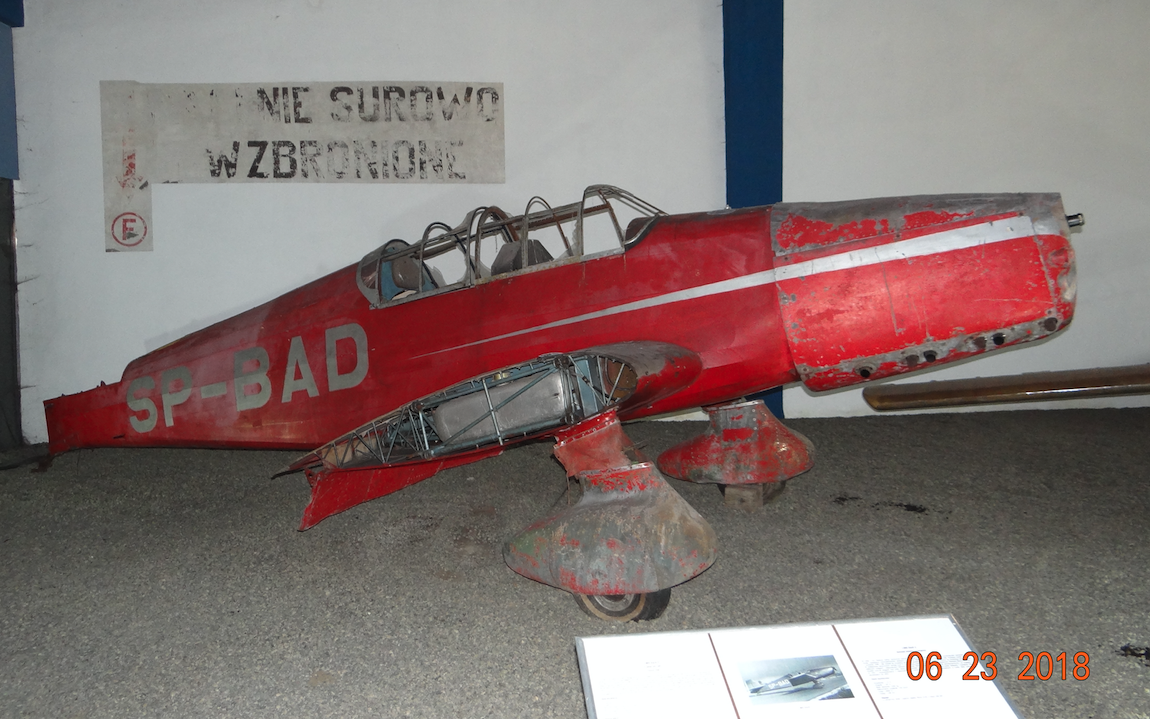
Zuch-2. 1949 year.
The LWD team, with Siemens-Halske (Bramo) Sh-14 engines up to 160 HP, took advantage of another opportunity and decided to mount it on the Junak design. This is how the Zuch-2 SP-BAG aircraft was manufactured. Factory number 20. The first flight of the aircraft took place on 1.04.1949 at Lublinek Airport, and at the helm sat engineer. Antoni Szymański. The Zuch-2 was slightly weaker than the Zuch-1, as the engine only nominally reached 116 hp. The Zuch-2 aircraft underwent state tests from 20/05/1949 to 25/11/1949. His grade was identical to his older brother's. Due to the fact that LWD had several Siemens-Halske (Bramo) Sh-14 engines, it was decided to manufacture 5 Zuch-2 series machines. They received registrations SP-BAL No. 21, SP-BAM No. 22, SP-BAN No. 23, SP-BAO No. 24, SP-BAP No. 25.
The LWD team made several adjustments to serial aircraft. The cabin glazing is divided into a permanent windscreen and a movable wind deflector. The windbreak skeleton now served as an anti-capotage goat. The wing construction has been strengthened. Effective hydraulic wheel brakes are fitted. The fuel installation was adapted for reverse flights. One of the copies, from February 5, 1951 to March 8, 1951, was subjected to state tests, after which the observed defects were removed. On June 6, 1951, the aircraft received the certificate as a training and tourist machine. Of course, the testimony as a tourist plane during communism was pure fiction. At the time, not a single pilot with a license had his own aircraft. These aircraft went to aeroclubs and were operated there until 1955.

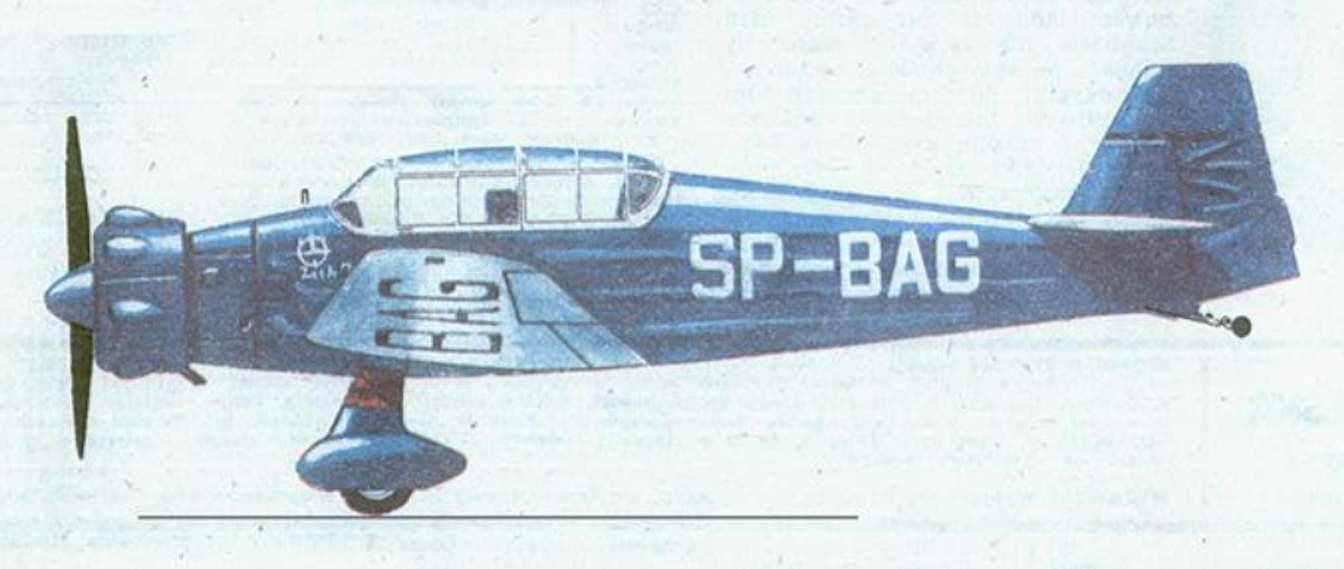
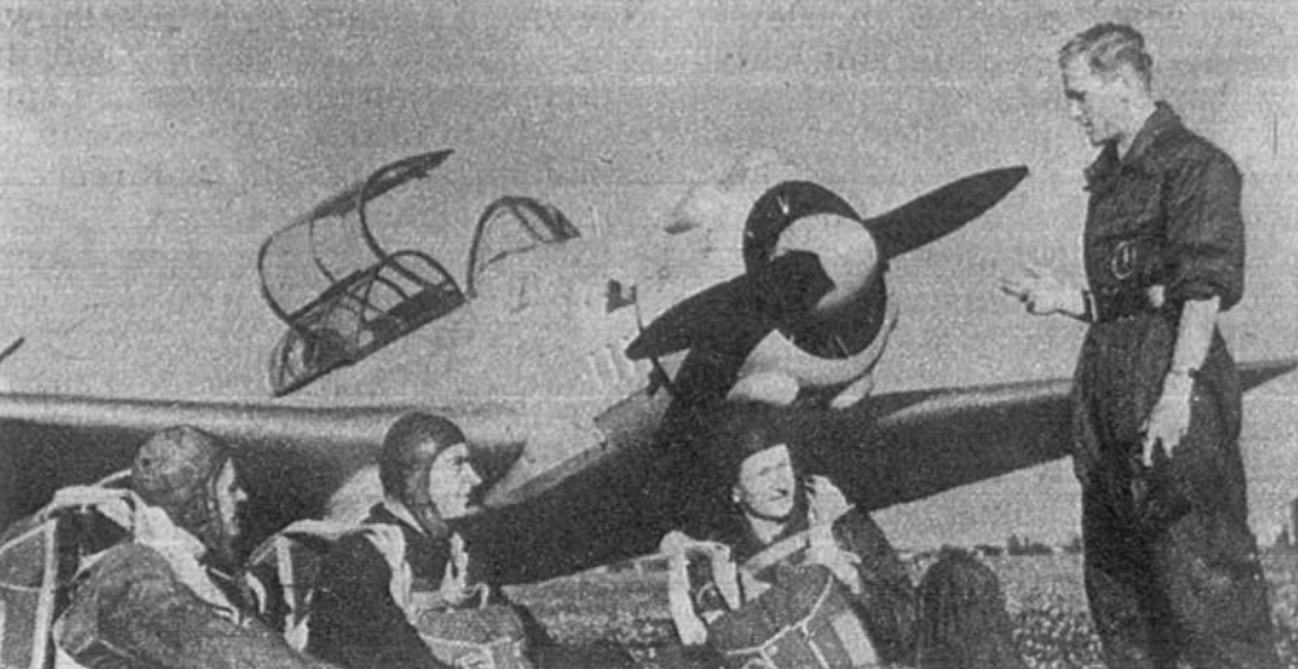
The picture shows four pilots training in aerobatics. Three of them are fully equipped to take the place behind the controls of the Zuch-2 aircraft. They have pilots, overalls and two parachutes on their heads; back and front spare.
Written by Karol Placha Hetman
Kraków 2020-04-18
049b Section 1948-09-01
Lotnicze Warsztaty Doświadczalne LWD Zuch
Poland
Training aircraft.
Construction

Zuch is a single-engine, training aircraft, low-wing aircraft, mixed construction.
Wings
Wings with trapezoidal contour, wooden structure, covered with canvas and plywood. The wings were equipped with ailerons and flaps in the center wing. Technically, the wing consists of three parts. The central center wing is permanently connected to the fuselage. The outer parts are subtracted. A biconvex NACA 23012 profile was used at the fuselage and NACA 23009 at the ends. Metal center wing structure. There are three ribs on each side of the hull. The center wing cover is beech or birch plywood, 2 mm thick. Sidewalk on the left wing. On the plane, the fuel tanks were located in both parts of the center wing; on the left and right. The wings are equipped with ailerons and three-piece crocodile flaps. The middle flap is also located under the hull itself. Metal construction. Manual swing, for taking off 14 degrees, for landing 45 degrees.
Exterior wings with two girders and 16 ribs. Wooden girders. The leading edge to the front girder is covered with 2 mm thick plywood, and between the beams 1.5 mm thick plywood, the rest covered with canvas. The flaps reach to rib No. 8. Friese shuttlecocks, mass balanced and aerodynamically loaded. Placed between ribs No. 8-No. 16. Wooden covered with canvas. Swiveling down 19 degrees, up 28 degrees. A reflector was placed in the left wing, and a Pitot tube in the right wing, which is electrically heated. Position lights at the wing tips; on the left red, on the right green. At the ends of the wings there are handles for holding the wing.
Fuselage
The fuselage is a truss made of chromomolybdate steel pipes. It consists of 4 stringers connected by ten frames. The truss formed in this way was reinforced with diagonal bars. The front frame has been reinforced with sheet metal acting as a fireproof barrier. The engine bed and oil tank are attached to it. From the fuselage side, an outgoing fuel tank is attached to the bulkhead. There is a crew cabin between frames 2 and 4. Wing girders are attached to frame 2 and 3.
Tandem seats in the cabin; first instructor, second student. Metal armchairs, skeletal structure covered with tarpaulin. Vertically adjustable. Adapted to use back and seat parachutes. Three-part cab cover. The front one is a permanent windbreak, which acts as an anti-capotage goat. The wind deflector above the first chair opens to the right with the possibility of an emergency drop. The fairing above the rear cabin is moved backwards along the guides. An on-board battery is located behind the cabin. Profiling wooden slats were added to the hull skeleton, which gave the hull an oval shape. The whole was covered with canvas, and in some places with plywood. The hull and inside the engine were covered with sheet metal.
Tail-plane
Classic, self-supporting, wooden structure covered with plywood and canvas. Trapezoidal outline. Symmetrical profile. Mass-balanced and aerodynamically balanced rudders. The rudder is equipped with an unloading flap, swiveling 20 degrees in both directions. White position light at the top of the vertical stabilizer. Headsets tilted down 20 degrees and up 30 degrees. They have balancing flaps (trimmer).
Landing gear
Three-support fixed chassis with rear wheel. The chassis is intended for use on dirt runways. Main chassis spacing 2.05 m. Chassis base 5.45 m. Single-main main chassis attached to the rear girder in the center wing. Oil-air shock absorbers. 500 mm x 150 mm low pressure pneumatics. Hydraulic brakes. Front undercarriage mounted on oblique shin. Rear castor.
Engine LWD Zuch.
The Zuch-1 has a Walter Minor 6-III engine with 160 hp. It is a 6-cylinder in-line engine with hanging pistons, air-cooled. Engine weight 130 kg. 5.97 liter capacity. Compression ratio 6.0 atm
The Zuch-2 has a Siemens Bramo Sh 14 A engine with 160 HP. It is a 7-cylinder radial engine.
Data T-T LWD Zuch.
Zuch-1. Span 10 m (32.8 ft), length 7.84 m (25.7 ft), take-off weight 1,000 kg (2,248 lb), maximum speed 244 km / h (132 kt), ceiling 5,800 m (19,000 ft), range 1,180 km (637 NM).
Zuch-2. Span 10 m, length 7.60 m, take-off weight 1 020 kg, maximum speed 222 km / h, ceiling 4 750 m, range 1 160 km.
Written by Karol Placha Hetman
Kraków 2020-04-18
049b Section 1948-09-01
Lotnicze Warsztaty Doświadczalne LWD Zuch
Poland
Training aircraft.
Tally
Zuch-1 – 1 prototype SP-BAD Nr 17.
Zuch-2 – 1 copy Nr 20 SP-BAG and 5 copies were built. They have received registrations SP-BAL Nr 21, SP-BAM Nr 22, SP-BAN Nr 23, SP-BAO Nr 24, SP-BAP Nr 25.
Written by Karol Placha Hetman
